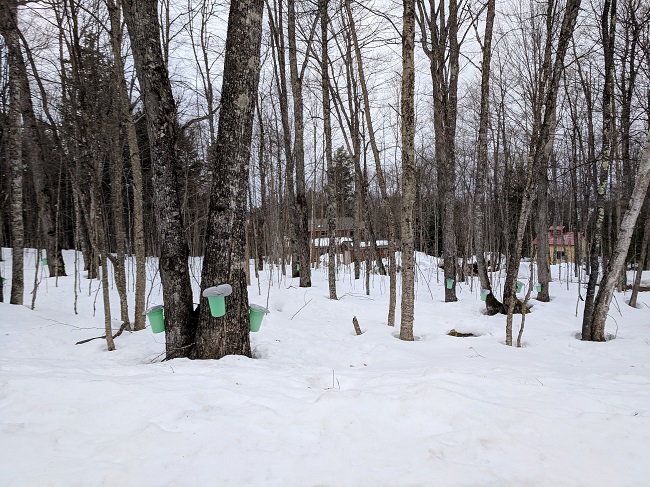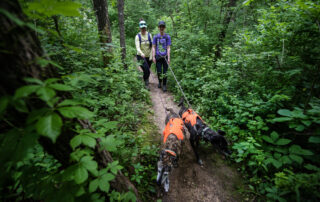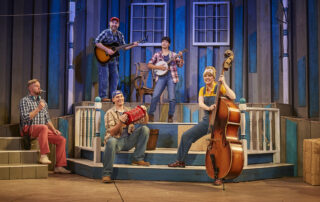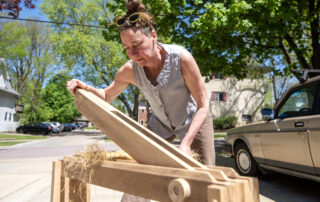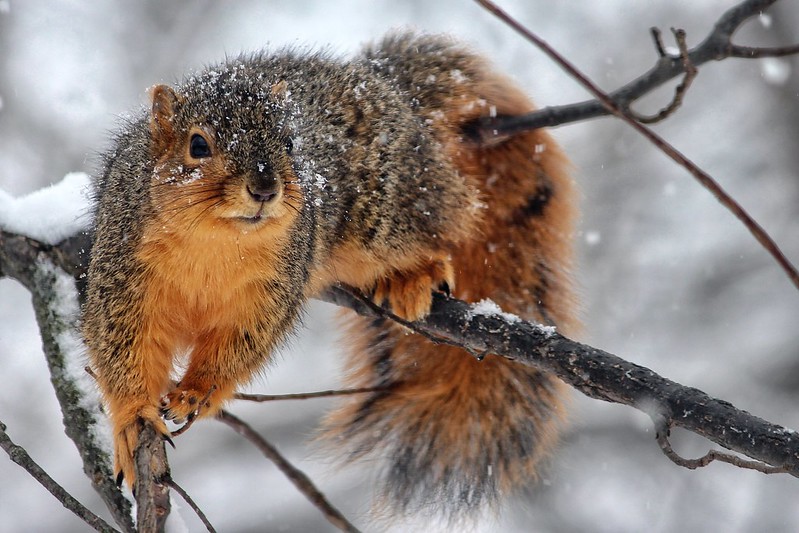Dan and Liz Stattelman-Scanlan of Madison, Wisconsin and their family have 175 sugar maples just across the state line in the Upper Penisula of Michigan. About fifteen years ago, Dan’s father, Ed Scanlan of Neenah, Wisconsin, began tapping the trees. If you’re going to try it, here are some important pointers:
- Make sure you have a maple tree.
- Make sure the tree is alive!
- Also, “It’s kind of important that you have the angle of the tap down,” Scanlan said. “We’ve had people that have tapped trees, and it’s been slightly angled into the tree, and the sap doesn’t come out.”
One afternoon on their land, Dan Stattelman-Scanlan found a promising tree. If the drilling and tapping go according to plan, he’ll put in a tap and hang and bucket, and sooner or later, he’ll hear the dripping of sap.
The average maple tree will produce about 10 or 12 gallons of sap per season. During the warmth of the day, starch stored in the roots for the winter rises through the trunk as sugary sap. Tapping doesn’t affect the health of the tree. A healthy tree can produce sap for a hundred years or more.
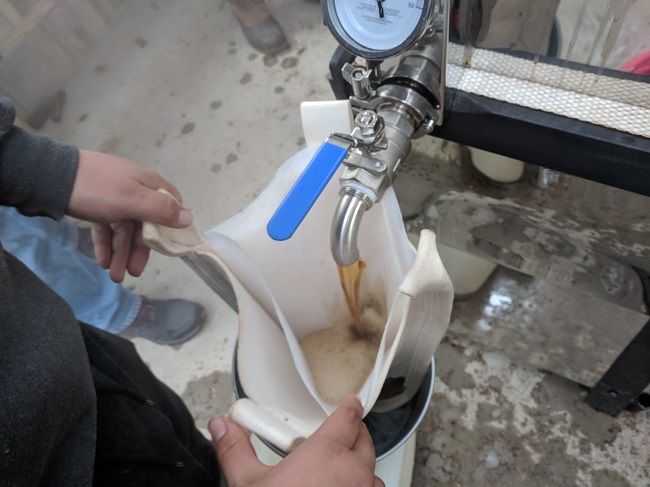
Filtering sap in preparation for boiling, Perch Lake, Michigan. (Photo by Amanda Gilliland)
It’s time now to haul it to the sugar shack where it’s poured into a storage tank.
The family has built a handsome and efficient new sugar shack because a year or so ago, at dinnertime, the original shack burned down for some reason. From the storage tank, the sap is pumped into the head tank, and from the head tank, it goes into the float pan, which has a device that regulates the depth of the sap in the main evaporator tank. From there, it flows into the finishing tank, where it reposes in a second float pan.
Why doesn’t the sap boil over and make a gooey mess all over the floor? For the watchful custodian of the process, there’s a simple trick–poking a match tipped with butter into the hot bubbling sap, which makes it drop back down like magic. In the float pan, evaporation begins to turn the watery sap into viscous syrup.
It all boils down to this. At the end of the season, by about April 15, the 175 sugar maples will have yielded you something like 1200 gallons of sap that have been processed into 30 gallons of potent maple syrup. Now, kick back and look forward to next year when that otherwise awkward time between winter and spring brings your next chance to reap a sweet reward. In the meantime, bon appétit!
